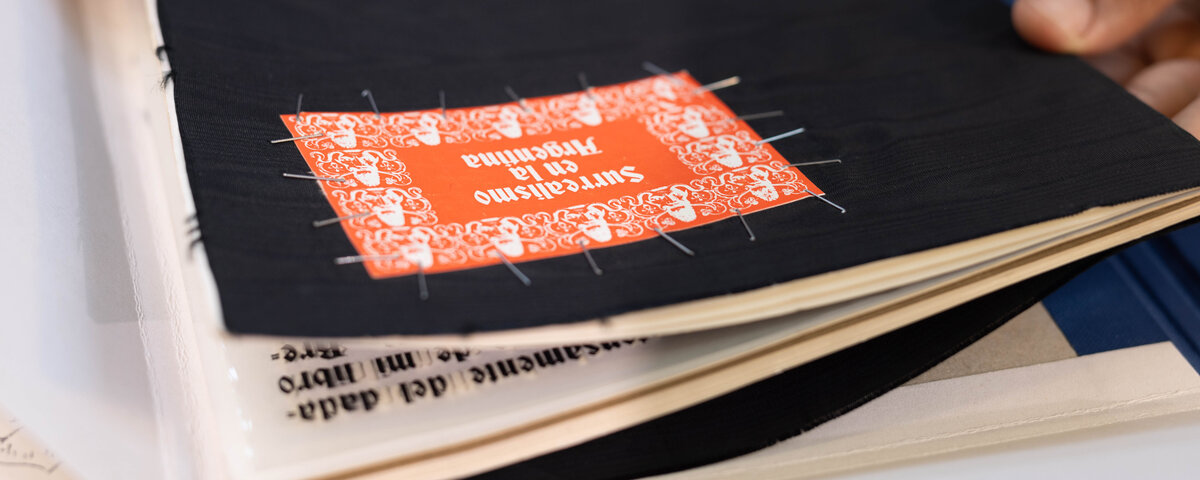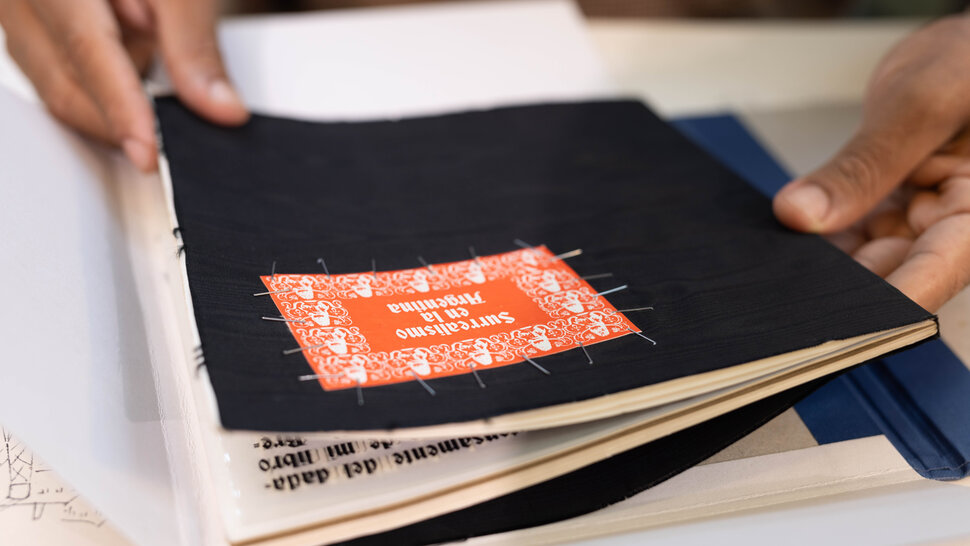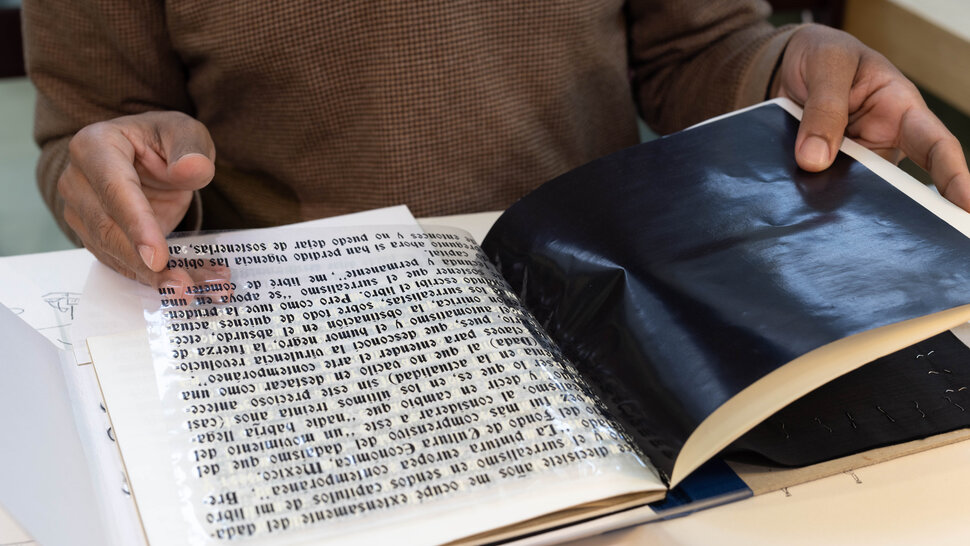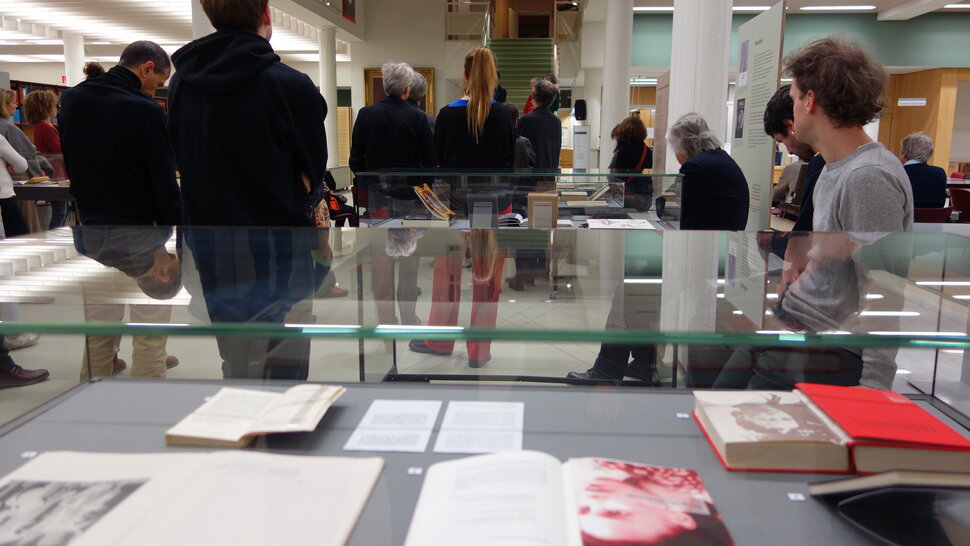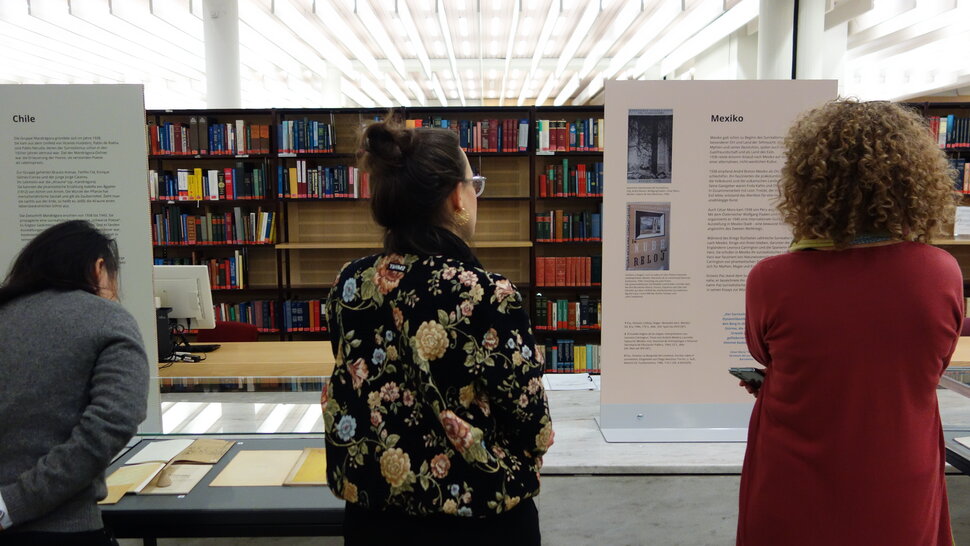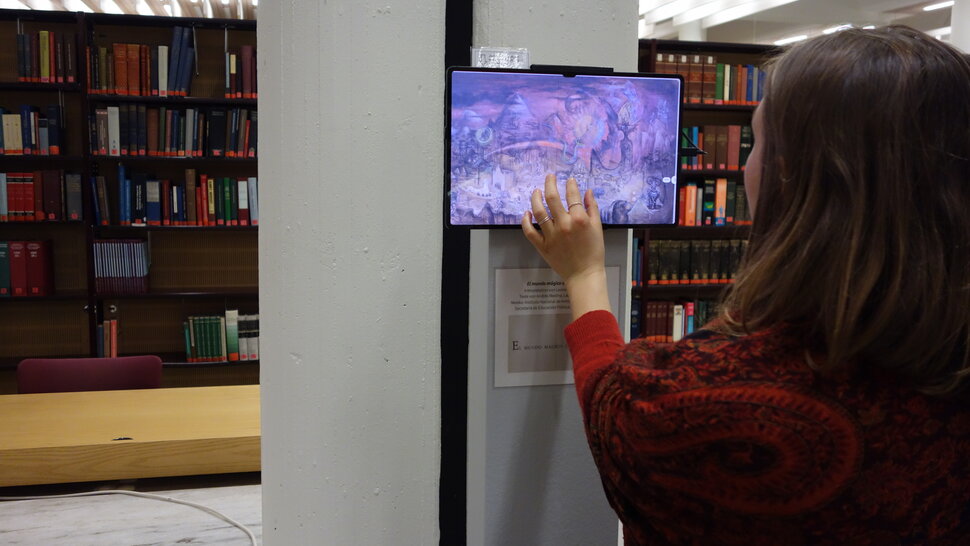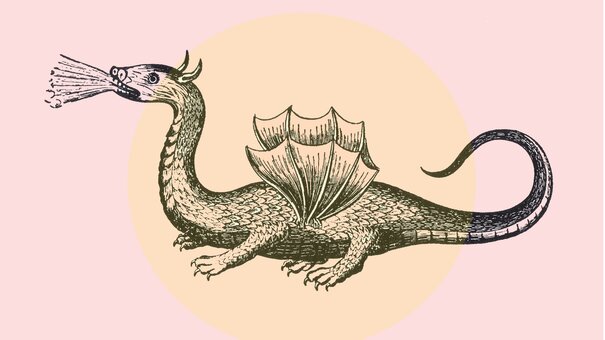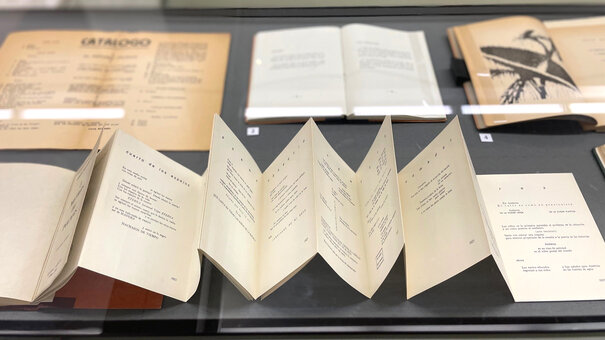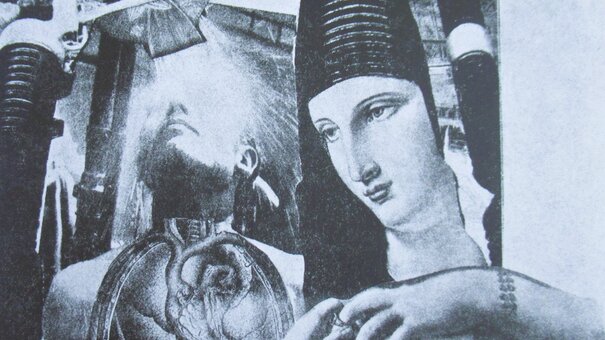André Breton's first Surrealist Manifesto was published in Paris on October 15, 1924. It was the beginning of a subversive, poetic movement that spread worldwide and continues to have an impact on art and poetry to this day. In Latin America, intellectuals, artists and poets soon took an interest in the new movement. They translated texts, reported in magazines and created their own artistic works. This often resulted in groundbreaking poetic activities in the context of Latin American avant-garde movements.
To mark the centenary of the emergence of Surrealism, the showcase exhibition in the reading room of the Ibero-Amerikanisches Institut (IAI) presents magazines and artists' books, including rare first editions and dedication copies, many of which are in the IAI's holdings. They bear witness to the interwoven, multifaceted history of surrealism on the continent. The exhibition places the exhibits in a historical context and thus provides new regional and thematic insights into the Latin American magnetic fields of Surrealism.
Latin American magnetic fields of surrealism
The surrealist movement praised freedom, imagination and the unconscious, dream worlds, childhood fantasies and madness. It discovered the poetic power of other, non-occidental worlds. Initially, Latin America was a territory of dreams, longing and political projections for the European surrealists. This can be seen, for example, in the surrealist world map that appeared in the Belgian magazine Variétés in 1929: it depicted the world in distorted proportions in line with surrealist interests. Latin America, for example, included revolutionary Mexico and pre-Columbian Peru, while other regions were not yet on the horizon of the European movement. However, Latin America soon became a real experience of personal and artistic freedom for many of them - not least due to flight and exile during the Second World War.
Conversely, Latin American intellectuals were already reporting on Surrealism in the mid-1920s. José Carlos Mariátegui in Peru and the Contemporáneos group in Mexico initiated translations, reviews and published surrealist works. In Buenos Aires, Aldo Pellegrini founded a surrealist group in 1926 and the first surrealist magazine in Spanish in 1928 with the title Qué (Engl. What). In the same year, the Brazilian Revista de Antropofagía ironically linked Surrealism with an indigenous Golden Age.
In Paris, Latin American poets and intellectuals were also close to Surrealist activities in their early days, such as the poets César Moro and César Vallejo from Peru or the Cuban writer and journalist Alejo Carpentier.
Susanne Klengel, Professor of Latin American Literatures and Cultures at the Institute for Latin American Studies at Freie Universität Berlin and a member of the Ibero-Amerikanisches Institut's Supporter`s Circle ("Förderkreis des Ibero-Amerikanikanisches Instituts e.V."), has designed an exhibition with the help of Marcos Alves Medeiros de Araujo (Freie Universität Berlin) that uses objects and text panels to provide insights into the diverse surrealist activities and publications as well as their interconnections in Argentina, Chile, Mexico, Brazil, Peru and the Caribbean. It also draws connections to the collective avant-garde movement of Estridentismo, for example. This was rediscovered in the 1970s by the Chilean writer Roberto Bolaño, among others, who for his part took up surrealist ideas with his Infrarealist Manifesto.
Exhibition
Surrealismus in Lateinamerika. Zeitschriften und Künstlerbücher
Extended until 5 April 2025
Reading room of the Ibero-Amerikanisches Institut Stiftung Preußischer Kulturbesitz
Opening hours: Mon–Fri 8.00–19.00 h / Sat 8.00–13.00 h
Panels with texts in German
A cooperation of the Ibero-Amerikanisches Institut with the ZI Lateinamerika-Institut of the Freie Universität Berlin and the Förderkreis des Ibero-Amerikanikanisches Instituts
